Nepali cuisine is a treasure trove of flavors, celebrated for its vibrant spices and aromatic dishes that tell the story of the country's rich cultural heritage. Among the array of spices used, some rare gems truly define the uniqueness of Nepal's culinary traditions. In this blog, we delve into the extraordinary world of Timur, Jimbu, Dhaniya ko Geda, Silam, Lwang, Marich, and may more. These spices are not just culinary enhancements but are integral to the heritage and authentic taste of Nepali cuisine.
Exploring these rare spices offers a glimpse into the diverse agricultural and ecological zones of Nepal, where each spice brings its own story and flavor profile. Whether you are a culinary expert or a food enthusiast eager to broaden your palate, understanding how these unique spices are used in Nepali cooking can transform ordinary dishes into extraordinary culinary experiences. This blog aims to enlighten and inspire your cooking by introducing you to the less-trodden path of Nepali flavors that await discovery.
At Kathmandu Cooking Academy, we offer a unique exploration into the world of Nepali cuisine through our focus on rare spices that elevate traditional dishes. We provide an in-depth look at how these all spices can transform everyday cooking into something truly exceptional. Join us to discover the secrets of these lesser-known spices and enhance your culinary skills with the flavors of Nepal.
Timur (Sichuan Pepper)
Timur, also known as Sichuan pepper in other parts of the world, is a distinctive spice native to the Himalayan regions, including Nepal. This spice is not actually related to black pepper or chili peppers, but belongs to the citrus family, which explains its unique flavor profile combining citrusy undertones with a tingling numbness.
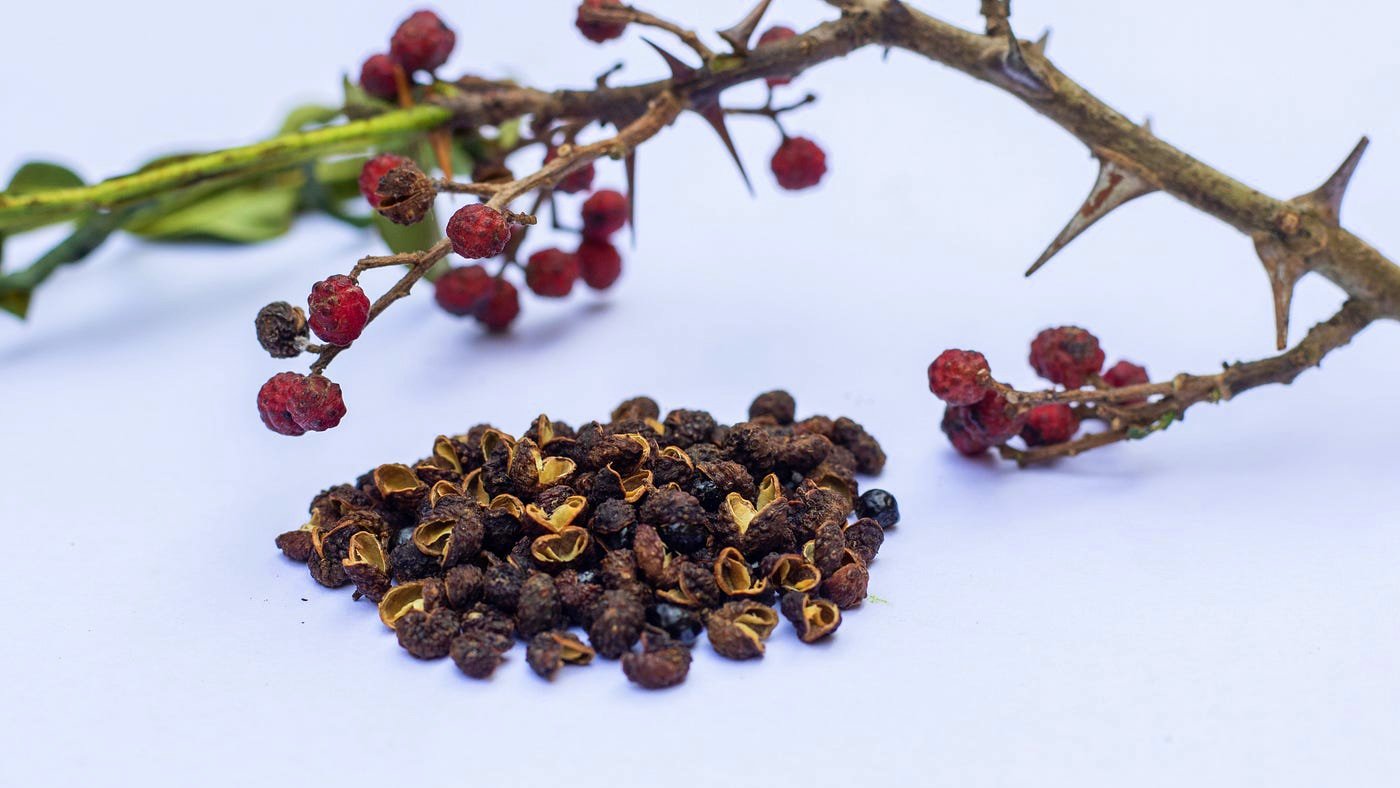
Culinary Uses
In Nepali cuisine, Timur is celebrated for its ability to add a lively burst of flavor and a tingling sensation to dishes. It's commonly used in:
- Momos (dumplings): Often added to the meat or vegetable filling to provide a unique zing.
- Pickles: Enhances the flavor profile of various Nepali achars (pickles).
- Stews and soups: A pinch of Timur can transform a simple dish into something with depth and vibrancy.
Flavor Profile
Timur is known for its slightly lemony taste and a tingling numbness that it imparts, which is due to the presence of hydroxy-alpha sanshool in the spice. This component stimulates the touch sensors in the lips and mouth in a way similar to a mild electrical current, making it a favorite among those looking to add an unusual sensory experience to their meals.
Health Benefits
Beyond its culinary uses, Timur is also valued for its health benefits, including:
- Digestive health: It is believed to help in digestion and reduce flatulence.
- Oral health: Often used in traditional medicine to maintain oral hygiene and alleviate toothaches.
- Anti-inflammatory properties: Like many spices, it is thought to have anti-inflammatory effects, which can be beneficial in reducing pain and swelling.
Timur's unique characteristics make it a prized spice in Nepali cooking, adding not just flavor but an experiential element to the cuisine. Its use in traditional dishes underscores the depth and diversity of Nepal's culinary heritage.
Jimbu (Himalayan Herb)
Jimbu is an aromatic herb that is a staple in traditional Himalayan cooking, particularly in Nepali cuisine. It falls within the Allium family, which includes onions, garlic, and chives, but Jimbu has a unique flavor profile that sets it apart.
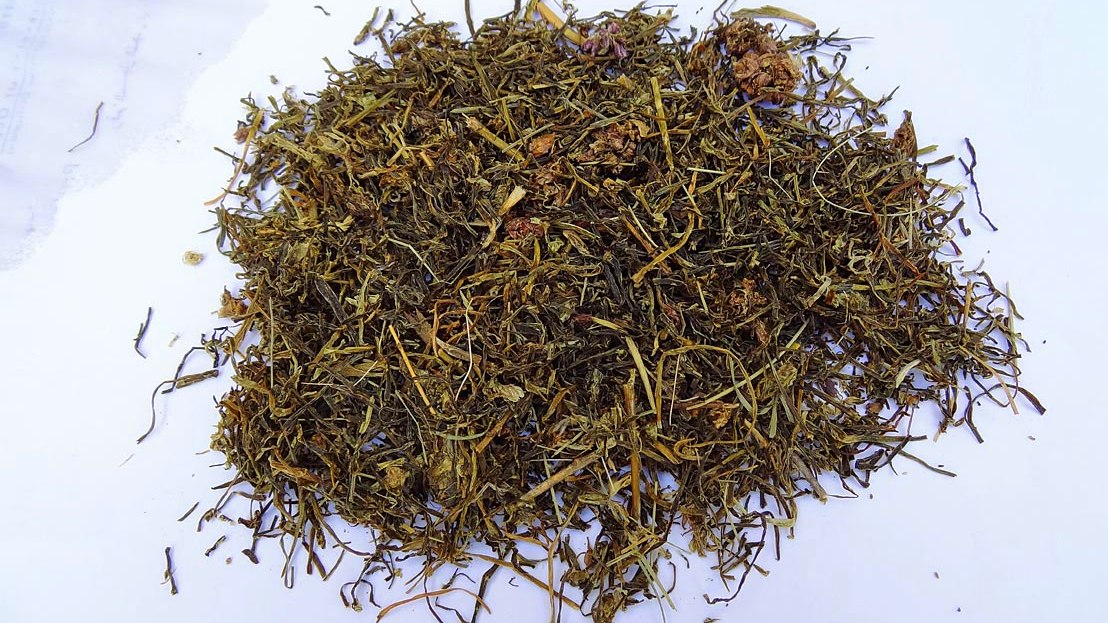
Culinary Uses
In Nepali dishes, Jimbu is most commonly used in a dried form. It is particularly popular for tempering dishes, where it is fried in hot oil or ghee until it sizzles, releasing its distinctive aroma and flavor into the oil. This flavored oil is then used to season dishes. Key uses include:
- Daal (Lentil Soup): Jimbu is often used to temper daal, imparting a subtle onion-like flavor that complements the earthy taste of lentils.
- Aloo ko Achar (Potato Salad): This herb adds a layer of flavor complexity to potato salads and other pickled dishes.
Flavor Profile
Jimbu offers a flavor reminiscent of a milder blend of onions and chives, with a slightly grassy note. It's less pungent than garlic but adds a depth of flavor that enriches dishes without overwhelming them.
Health Benefits
Jimbu is not just valued for its culinary uses but also for its potential health benefits, which include:
- Digestive aid: Like many members of the Allium family, Jimbu is believed to help in digestion and may soothe stomach issues.
- Antibacterial properties: It may have mild antibacterial effects, which can be beneficial in food preservation and safety.
- Respiratory health: Traditionally, Jimbu is used in herbal remedies to alleviate common cold symptoms and improve respiratory health.
Jimbu's unique flavor and health benefits make it an integral part of Nepali cuisine, particularly in regions where the harsh climate makes the cultivation of other aromatic herbs challenging. Its use in Nepali kitchens highlights the adaptability and local sourcing of ingredients typical in Himalayan culinary practices.
Dhaniya ko Geda (Nepali Coriander Seed)
Dhaniya ko Geda, the Nepali term for coriander seeds, is a spice that holds significant importance in Nepali cuisine. This variety of coriander seed is typically larger and more aromatic than those found in other parts of the world, offering a unique flavor profile that is essential to many traditional Nepali dishes.
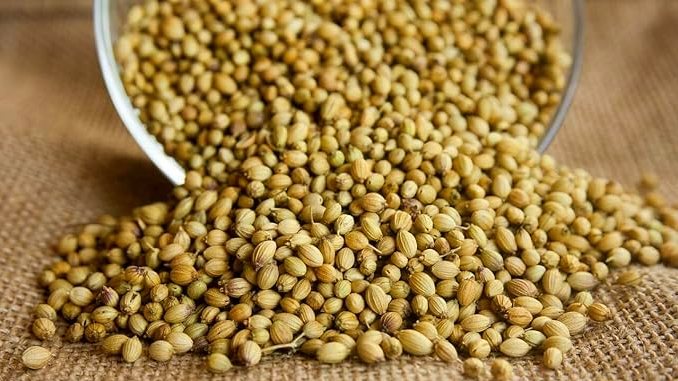
Culinary Uses
Dhaniya ko Geda is extensively used in both whole and ground forms to season a variety of dishes. Its uses include:
- Spice Blends: It's a key ingredient in many spice mixes, including masalas used in curries and vegetable dishes.
- Marinades: The seeds are ground into a powder and used to marinate meats, imparting a citrusy and slightly sweet flavor.
- Pickling: Essential for pickling, these seeds add depth and a hint of citrus to pickled vegetables.
Flavor Profile
Dhaniya ko Geda offers a warm, nutty, and citrus-like flavor, which is slightly sweeter and more intense than typical coriander seeds. This distinct taste enhances the flavor complexity of dishes, adding both a touch of sweetness and a spicy edge.
Health Benefits
Coriander seeds, including Dhaniya ko Geda, are known for their health benefits:
- Digestive health: They can help in relieving indigestion and bloating.
- Blood sugar control: Some studies suggest that coriander seeds may help in managing blood sugar levels.
- Anti-inflammatory properties: They contain antioxidants that may reduce inflammation in the body.
Dhaniya ko Geda not only elevates the taste of Nepali dishes but also brings with it several health benefits, making it a favored spice in the culinary landscape of Nepal. Its aromatic and flavor-enhancing qualities make it indispensable in Nepali kitchens, where it continues to spice up both everyday meals and festive culinary creations.
Silam (Perilla Seeds)
Silam, also known as Perilla seeds, is a lesser-known yet significant spice in Nepali cuisine, particularly valued in the mountainous regions of the country. Derived from the Perilla frutescens plant, which belongs to the mint family, these seeds have a distinct flavor and are rich in nutritional value.
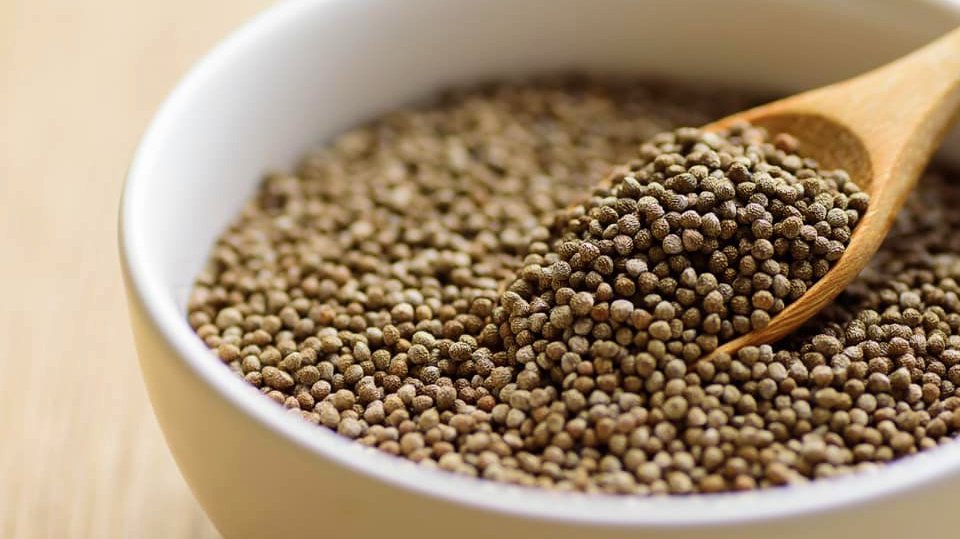
Culinary Uses
Silam is used in various forms in Nepali cooking, often roasted and ground into a fine powder before being added to dishes. It has a versatile role in the culinary scene:
- Seasoning: The ground seeds are used to season and enhance the flavor of soups, meats, and vegetable dishes.
- Salads: Sprinkled over salads, Silam adds a crunchy texture and a nutty flavor.
- Chutneys and Pickles: It is a common ingredient in traditional chutneys and pickles, providing an earthy undertone.
Flavor Profile
Silam offers a robust, nutty flavor with hints of anise and a slight bitterness that can compare to mustard seeds. When roasted, its flavor becomes more pronounced, adding depth and a rich aroma to the dishes it accompanies.
Health Benefits
Perilla seeds are not only favored for their taste but also for their health benefits, which include:
- Rich in Omega-3 fatty acids: Silam is an excellent source of plant-based omega-3 fatty acids, which are crucial for heart health and cognitive function.
- Anti-inflammatory properties: These seeds contain compounds that have anti-inflammatory effects, potentially benefiting those with inflammatory conditions.
- Antioxidant effects: The seeds are high in antioxidants, which help combat oxidative stress and may protect against various diseases.
Silam is a spice that truly encapsulates the essence of Nepali traditional medicine and culinary practices. Its use in Nepali cuisine not only enhances the flavor of food but also offers significant health benefits, making it a cherished ingredient in the Himalayan region.
Lwang (Clove)
Lwang, known globally as clove, is a powerful spice that is deeply ingrained in Nepali culinary traditions. It is harvested from the flower buds of the clove tree, Syzygium aromaticum, and is highly valued both for its intense flavor and medicinal properties.
.jpg)
Culinary Uses
In Nepal, Lwang is utilized in various ways to enhance the flavor of dishes:
- Spice Mixes: It is a critical component of Nepali garam masala, a spice blend used to season meats and rice dishes.
- Teas and Beverages: Cloves are often added to teas and hot beverages for their flavor and health benefits.
- Baking and Sweets: Although less common in traditional Nepali cuisine, cloves are sometimes used in sweets and baked goods during festivals and special occasions.
Flavor Profile
Lwang has a strong, pungent, and sweet flavor with a warm, almost numbing sensation on the palate. Its intense aroma is unmistakable and can dominate other flavors if used excessively.
Health Benefits
Cloves are not only a culinary delight but also a boon for health, known for their medicinal properties:
- Antimicrobial Properties: Lwang can kill or inhibit the growth of microorganisms, making it a popular choice for food preservation and in natural remedies for infections.
- Dental Health: It has been used traditionally to ease toothaches and improve oral health due to its eugenol content, which has pain-relieving properties.
- Antioxidant Source: Cloves are rich in antioxidants, which help prevent cellular damage and reduce the risk of chronic diseases.
Lwang's robust flavor and health benefits make it an indispensable spice in Nepali cuisine. Its use across a variety of dishes showcases its versatility and the depth it brings to the traditional flavors of Nepal.
Marich (Black Pepper)
Marich, or black pepper, is a staple spice in Nepali cuisine, known for its potent flavor and numerous health benefits. Derived from the dried berries of the pepper plant, Piper nigrum, black pepper is widely used across the globe, but the wild variety found in Nepal’s southern plains is particularly prized for its aromatic and intense qualities.
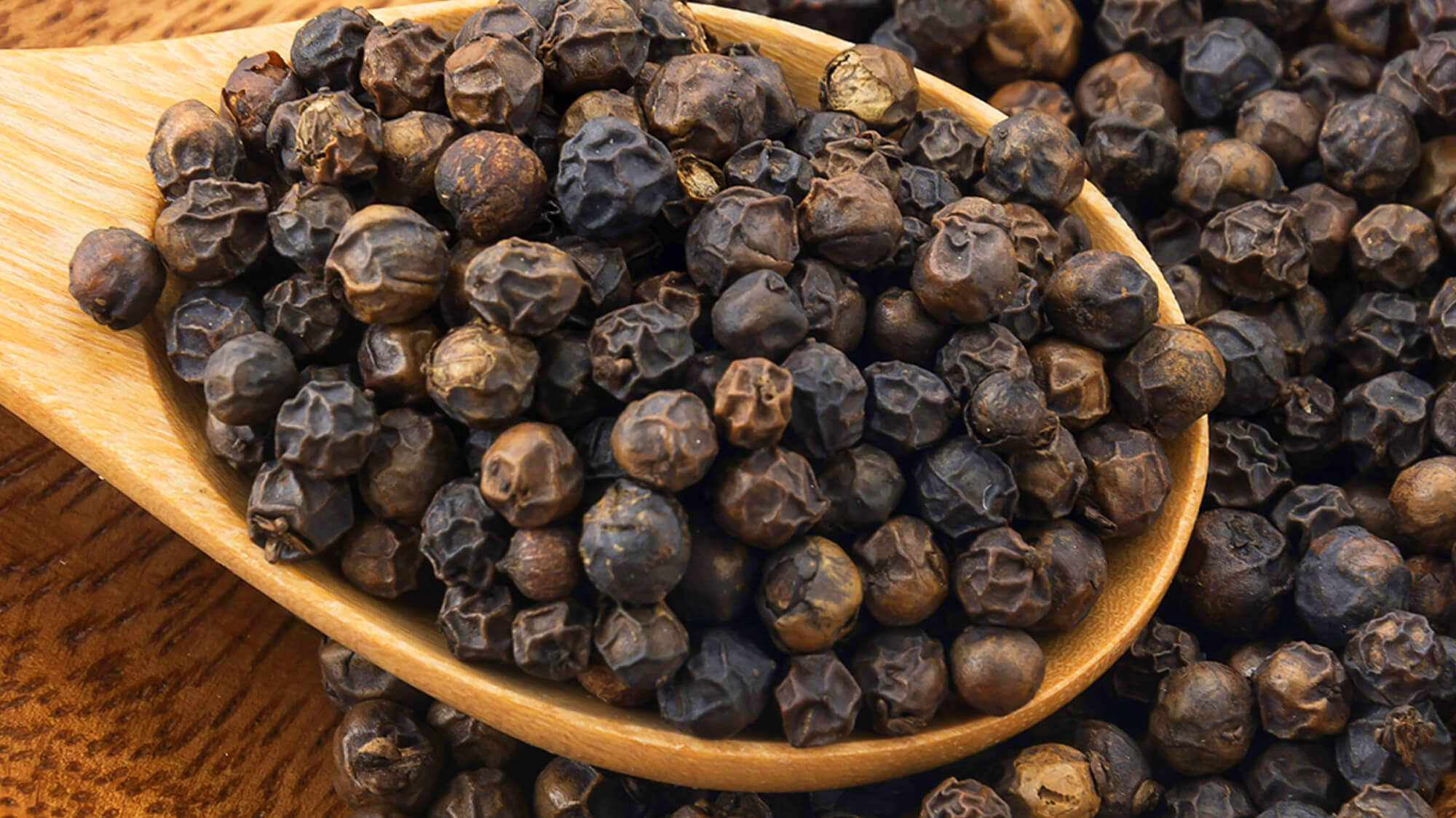
Culinary Uses
Marich is a versatile spice that is used in both ground and whole forms in Nepali cooking:
- Spice Blends: It is a key ingredient in various spice mixes, including garam masala, enhancing the warmth and depth of flavor.
- Seasoning: Black pepper is commonly used to season curries, stews, and meats, adding a sharp, pungent kick.
- Marinades: Ground Marich is often included in marinades for meats and vegetables, providing a bold flavor that permeates the dish.
Flavor Profile
Marich offers a sharp, spicy flavor with a slightly woody and citrusy undertone. Its heat is not overpowering but provides a pleasant warmth that enhances the overall taste of the dish.
Health Benefits
Black pepper is not only valued for its culinary uses but also for its health benefits:
- Digestive Aid: Marich stimulates the production of digestive juices, aiding in digestion and alleviating digestive disorders.
- Anti-inflammatory Properties: It contains compounds that help reduce inflammation in the body, which can be beneficial for those with inflammatory conditions.
- Antioxidant Rich: Black pepper is high in antioxidants, which protect the body from damage caused by free radicals and may lower the risk of chronic diseases.
Marich is an essential spice in Nepali kitchens, offering a robust flavor and a myriad of health benefits. Its use in traditional dishes underscores the depth and richness of Nepali cuisine, making it a must-have ingredient for anyone looking to explore the authentic flavors of Nepal.
Philinge (Niger Seeds)
Philinge, also known as Niger seeds, is a lesser-known but highly valued ingredient in Nepali cuisine. Derived from the Guizotia abyssinica plant, these small, black seeds are known for their rich, nutty flavor and are used in various culinary applications.
Culinary Uses
In Nepali cuisine, Philinge is used in several ways to add flavor and texture to dishes:
- Cooking Oil: The seeds are often pressed to extract oil, which is used in cooking and adds a subtle nutty flavor to dishes.
- Seasoning: Roasted and ground Philinge seeds are used as a seasoning for salads, vegetables, and rice dishes, providing a crunchy texture and rich taste.
- Chutneys and Pickles: They are commonly incorporated into chutneys and pickles, enhancing the flavor and nutritional profile of these condiments.
Flavor Profile
Philinge seeds have a unique nutty and slightly bitter flavor. When roasted, their aroma and taste become more pronounced, adding depth to the dishes they are used in.
Health Benefits
Niger seeds are not only valued for their culinary uses but also for their health benefits:
- Rich in Healthy Fats: Philinge seeds are high in unsaturated fats, particularly omega-3 and omega-6 fatty acids, which are beneficial for heart health.
- Protein Source: They are a good source of plant-based protein, making them an excellent addition to vegetarian and vegan diets.
- Antioxidant Properties: The seeds contain antioxidants that help fight oxidative stress and support overall health.
- Anti-inflammatory Effects: Philinge seeds have compounds that can reduce inflammation in the body, promoting better health and well-being.
Culinary Tips
- Roasting: To enhance their flavor, roast Philinge seeds lightly before using them in recipes.
- Grinding: Ground seeds can be used as a spice or mixed into sauces and dressings.
- Storage: Keep the seeds in an airtight container in a cool, dark place to maintain their freshness and nutritional value.
Philinge (Niger seeds) is a versatile and nutritious addition to Nepali cuisine, offering unique flavors and numerous health benefits. Incorporating these seeds into your cooking can enrich your dishes and provide a taste of authentic Nepali culinary traditions.
Radish Seeds
Radish seeds, known for their unique flavor and health benefits, are an integral part of Nepali cuisine. Derived from the radish plant (Raphanus sativus), these seeds offer a distinct peppery taste and are used in various culinary and medicinal applications.

Culinary Uses
In Nepali cuisine, radish seeds are utilized in multiple ways to enhance the flavor and nutritional profile of dishes:
- Spice Blends: Ground radish seeds are often included in spice mixes, adding a pungent, peppery kick to curries and vegetable dishes.
- Pickles and Chutneys: The seeds are used in pickles and chutneys, where their sharp flavor complements the tangy and spicy notes of these condiments.
- Salads and Stir-fries: Whole or ground radish seeds can be sprinkled over salads and stir-fried vegetables to add a crunchy texture and peppery flavor.
Flavor Profile
Radish seeds have a sharp, peppery flavor that is reminiscent of the radish root but more intense. This makes them a perfect ingredient for adding a burst of flavor to various dishes.
Health Benefits
Radish seeds are prized not only for their culinary uses but also for their numerous health benefits:
- Digestive Health: The seeds are known to aid in digestion and can help alleviate digestive disorders such as bloating and constipation.
- Detoxification: Radish seeds support liver function and help in detoxifying the body by eliminating toxins.
- Antioxidant Properties: Rich in antioxidants, radish seeds help combat oxidative stress and may reduce the risk of chronic diseases.
- Anti-inflammatory Effects: The seeds have anti-inflammatory properties that can help reduce inflammation and pain in the body.
Culinary Tips
- Roasting: Lightly roast the seeds to enhance their flavor before adding them to dishes.
- Grinding: Grind the seeds into a fine powder to use in spice blends and marinades.
- Storage: Store radish seeds in an airtight container in a cool, dry place to maintain their freshness and potency.
Radish seeds are a versatile and nutritious ingredient in Nepali cuisine, offering a unique peppery flavor and a range of health benefits. Incorporating these seeds into your cooking can add a distinctive taste and elevate the nutritional value of your dishes, providing an authentic Nepali culinary experience.
Where to Find Rare and Unique Spices in Nepal
Nepal is a treasure trove of unique and aromatic spices that elevate its cuisine. If you are looking to source rare spices like Timur (Sichuan Pepper), Jimbu (Himalayan Herb), Dhaniya ko Geda (Nepali Coriander Seed), Silam (Perilla Seeds), Lwang (Clove), Marich (Black Pepper), Philinge (Niger Seeds), and Radish Seeds, here are some of the best places to explore:
Local Markets and Bazaars
- Asan Bazaar, Kathmandu: One of the oldest and busiest markets in Kathmandu, Asan Bazaar is a go-to place for a wide variety of spices. Here, you can find authentic and fresh Timur, Jimbu, and Dhaniya ko Geda among others.
- Patan Market: Located in Lalitpur, this market is known for its traditional spice vendors who offer locally sourced spices including Silam and Marich.
- Mahabouddha, Kathmandu: This area is famous for spice shops where you can buy high-quality Lwang and other essential spices used in Nepali cooking.
Specialty Spice Shops
- Himalayan Spices and Herbs: This shop in Thamel, Kathmandu, specializes in a variety of Nepali spices and herbs, including rare ones like Jimbu and Silam.
- Purna Spices: Also located in Thamel, Purna Spices offers a comprehensive selection of Nepali spices, ensuring quality and authenticity.
Supermarkets
- Bhatbhateni Supermarket: With several branches across Kathmandu and other major cities, Bhatbhateni offers a wide range of spices, including Timur, Marich, and Lwang.
- Saleways: Another popular supermarket chain where you can find a good selection of local spices.
Online Stores
- Nepal Organic Farm: This online platform offers a variety of organic spices, including Dhaniya ko Geda and Timur, sourced directly from local farms.
- Daraz Nepal: The online shopping giant has a category dedicated to spices where you can find many rare Nepali spices delivered to your doorstep.
Direct from Farmers
- Mountain Farms and Co-operatives: Visiting or contacting farms and co-operatives in regions like Mustang, Manang, and Jumla can be a great way to source Jimbu, Silam, and other spices directly from the producers, ensuring freshness and supporting local communities.
Finding these rare and unique spices in Nepal involves exploring vibrant local markets, specialty spice shops, and reputable supermarkets. Whether you prefer the traditional market experience or the convenience of online shopping, Nepal offers numerous avenues to discover the rich and aromatic spices that define its cuisine.
Tips to Remember While Using Rare Spices in Nepali Cuisine
Incorporating rare spices like Timur (Sichuan Pepper), Jimbu (Himalayan Herb), Dhaniya ko Geda (Nepali Coriander Seed), Silam (Perilla Seeds), Lwang (Clove), Marich (Black Pepper), Philinge (Niger Seeds), and Radish Seeds can significantly enhance the flavors of your dishes. Here are some essential tips to keep in mind while using these spices:
Use in Moderation
- Timur: Its strong, numbing effect can overpower other flavors, so use it sparingly. A small amount is enough to impart its characteristic zing.
- Lwang: Cloves have an intense flavor, and a little goes a long way. Too much can make a dish bitter.
- Marich: Freshly ground black pepper is potent. Start with a small amount and adjust to taste.
Proper Storage
- Store all spices in airtight containers in a cool, dark place to preserve their flavor and potency.
- Whole spices like Lwang and Marich retain their flavor longer than ground spices. Grind them fresh as needed.
Enhance Flavors through Tempering
- Jimbu: Fry in hot oil or ghee until it sizzles and releases its aroma before adding it to dishes like daal and achar.
- Silam: Roast seeds before grinding to enhance their nutty flavor.
Balancing Flavors
- Combine spices thoughtfully to balance flavors. For example, Dhaniya ko Geda can add a citrusy note that balances the heat of Marich.
- Use Silam to add a subtle crunch and nutty flavor without overwhelming the dish.
Experiment and Taste
- Taste as you go. Since these spices are potent, it’s important to add them gradually and adjust according to your preference.
- Experiment with combinations to discover how different spices complement each other and the dish.
Health Benefits
- Remember the health benefits of each spice. For example, Timur aids digestion, while Silam is rich in omega-3 fatty acids.
- Use Lwang for its antimicrobial properties, especially in dishes that benefit from a longer shelf life.
Cultural Authenticity
- Respect traditional recipes. These spices are integral to the authenticity of Nepali dishes, so using them as intended can bring out the true essence of Nepali cuisine.
- Learn from local cooking methods to understand how these spices are best utilized.
By following these tips, you can effectively use rare Nepali spices to enhance your cooking, creating dishes that are flavorful, balanced, and true to the rich culinary traditions of Nepal.
The rare and unique spices of Nepal are essential elements that define the richness and authenticity of its cuisine. By incorporating these exceptional flavors into your cooking, you can transform ordinary dishes into extraordinary culinary experiences. Whether sourced from bustling local markets, specialty shops, or directly from farmers, these spices offer a gateway to the diverse and vibrant gastronomic heritage of Nepal, enriching both your palate and your appreciation for this culturally rich cuisine.

